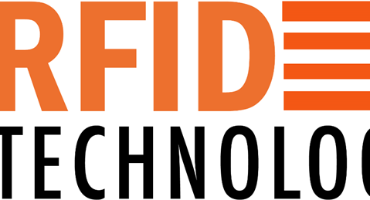How RFID Technologies when applied for Returnable Transport Items (RTIs) like pallets and crates in transport and logistics, and how it actually cuts waste, prevents losses, and boosts profitability. What We Mean by RTIs - Returnable Transport Items are reusable carriers - pallets, crates, roll cages, totes - used to move goods between suppliers, warehouses, and customers. The problem: They’re expensive, get lost, damaged or sitting idle in the wrong location.
Why RFID Technologies fits this task perfectly:
RFID UHF frequency (860–960 MHz) is perfect for (RTI) tracking because:
Longer read ranges (up to 10–12m with fixed readers, 3–6m with handhelds)
Fast multi-tag reading (hundreds per second)
Durable passive tags that survive years of reuse
Low per-use cost once tags are in place
How It Works Across the Inbound–Outbound Cycle
RFID Tagging the RTIs
Each pallet/crate gets a rugged UHF RFID label tag with a unique ID.
RFID UHF Tag labels are linked in the database to that item’s lifecycle history (owner, last shipment, location).
Outbound Process:
Goal: Track every RTI leaving your facility and what’s on it.
Loading bay portal readers automatically capture tag IDs as pallets/crates pass through.
Link contents to RTI ID in WMS/ERP — so you know which goods are in which RTI.
Proof of dispatch — you have a time-stamped log showing the RTIs sent and their destinations.
Inbound Process:
Goal: Ensure RTIs return promptly and in good condition.
Receiving gate readers record each incoming RTI.
Compare inbound counts to outbound logs to spot missing items instantly.
Identify wrong-location RTIs (ones that shouldn’t be coming in from that source).
Benefits That Hit Profitability:
Problem Without RFID UHF RFID Impact Business Result
RTIs get lost in customer supply chain Automated location & movement tracking Fewer replacements = lower capital spend
Delayed returns (RTIs sit idle at customer sites) Alerts when return cycle exceeds SLA More RTI turns/year = higher asset productivity
Manual counts are slow & error-prone Automated, accurate counts at gates Lower labour cost & faster throughput
Goods misplaced in wrong RTIs Linking RTI ID to shipment data Lower shrinkage, faster dispute resolution
No visibility of RTI fleet utilisation Real-time fleet dashboard Better asset allocation & reduced over-purchasing
Waste & Loss Reduction:
Shrinkage prevention — instant alerts for missing pallets.
Damage tracking — tag history shows where/when damage likely occurred.
Optimised fleet size — you only buy what you need, based on actual cycle data.
Eliminating paper records — everything is digitally captured.
Profit Levers:
Cost avoidance: Less spend replacing lost RTIs.
Higher and better utilisation: More turns per asset before replacement.
Customer chargeback: Proof of RTI non-return enables fair billing.
Operational efficiency: Less labour → lower OpEx.
Data-driven contracts: Optimise pooling agreements and transport planning.
RFID UHF Technology Setup:
RFID UHF Tags & Labels: Rugged, impact- and moisture-resistant (embedded in crate, riveted to pallet, or encased).
Fixed-mount RFID UHF Readers: At dock doors, yard gates, or conveyor points.
Mobile Handheld UHF RFID Readers: For exception handling or remote sites.
Middleware & integration: Links reads to ERP/WMS/RTI management systems.
Analytics dashboards: Show RTI location, cycle time, and utilisation KPIs.


